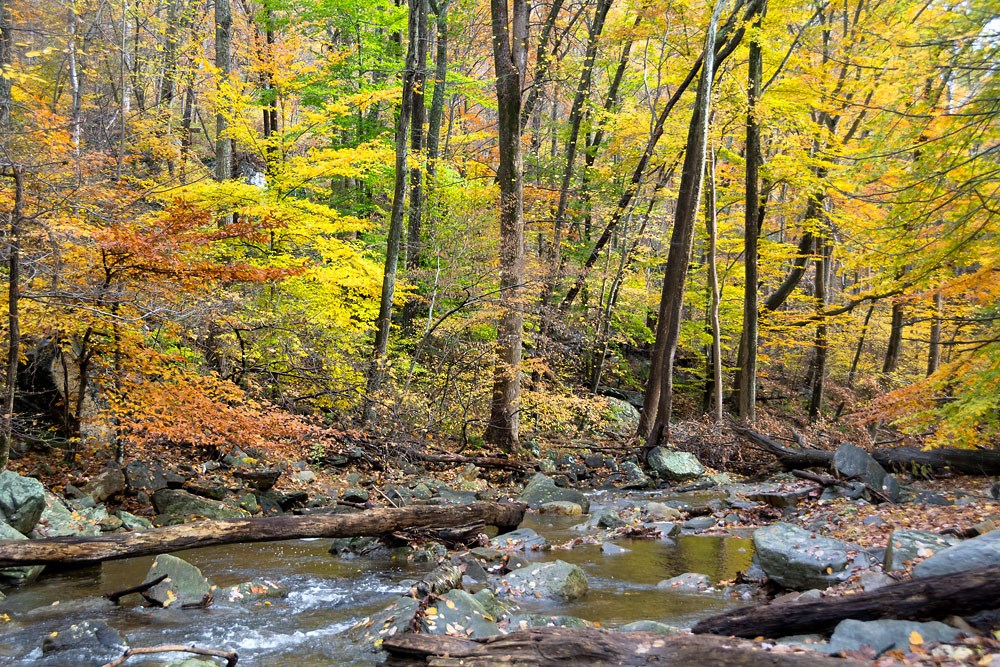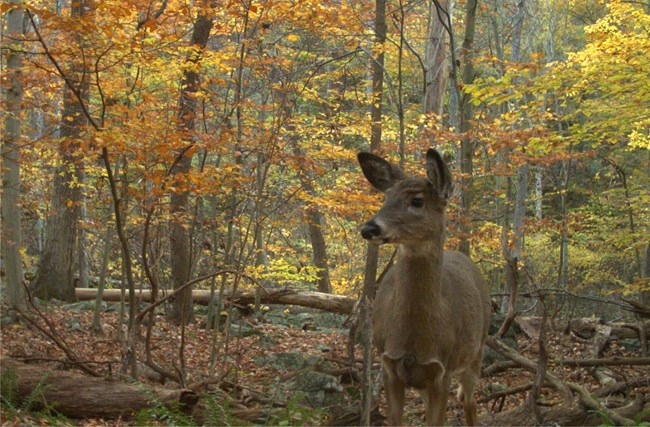
Volunteer John Zuke 
NPS - Catoctin Mountain Park Catoctin Mountain Park lies within the mountainous area known as the Blue Ridge Province. This 5,890-acre hardwood forest park with its refreshing streams and scenic vistas, offers a rare haven in a rapidly developing area of the country. However, Catoctin Mountain Park hasn’t always looked this way. In the 18th and 19th centuries the land now known as Catoctin was extensively logged to support local agriculture practices and to produce charcoal for the nearby iron works furnace. In 1933 the land was set aside as the Catoctin Recreation Demonstration Area with its purpose being to rehabilitate “sub-marginal” farmland. In 1954 the Recreation Demonstration Area was divided, with half of the area becoming Cunningham Falls State Park and the remaining half becoming Catoctin Mountain Park. This venture, known as the Catoctin Project, was an example of a cooperative effort between State and Federal officials. Since then, the land has rejuvenated itself, transforming a disturbed environment into an excellent model of a second growth forest ecosystem. Today, a mixed hardwood forest covers nearly 95% of the park. Catoctin Mountain Park is also part of a larger forested public lands complex that includes Cunningham Falls State Park, Frederick and Thurmont Watersheds, and Gambrill State Park. Many plants and animals, including several Maryland Threatened and Endangered species, thrive within this forest sanctuary. The high gradient streams, Big Hunting Creek and Owens Creek, run clean and support healthy populations of brown and brook trout. Catoctin Mountain Park is a very diverse place that offers respite to the plants and animals that depend on its existence. Its peaceful environment also provides a needed escape from the everyday hustle and bustle of city life for all people, including, on occasion, the President of the United States. `' Learn about the animals and plants that make their homes on Catoctin Mountain. Read about some of the environmental factors, some natural and some human-caused, that affect the park. Discover some of the many unique natural features and ecosystems within the park.
|
Last updated: August 23, 2021
